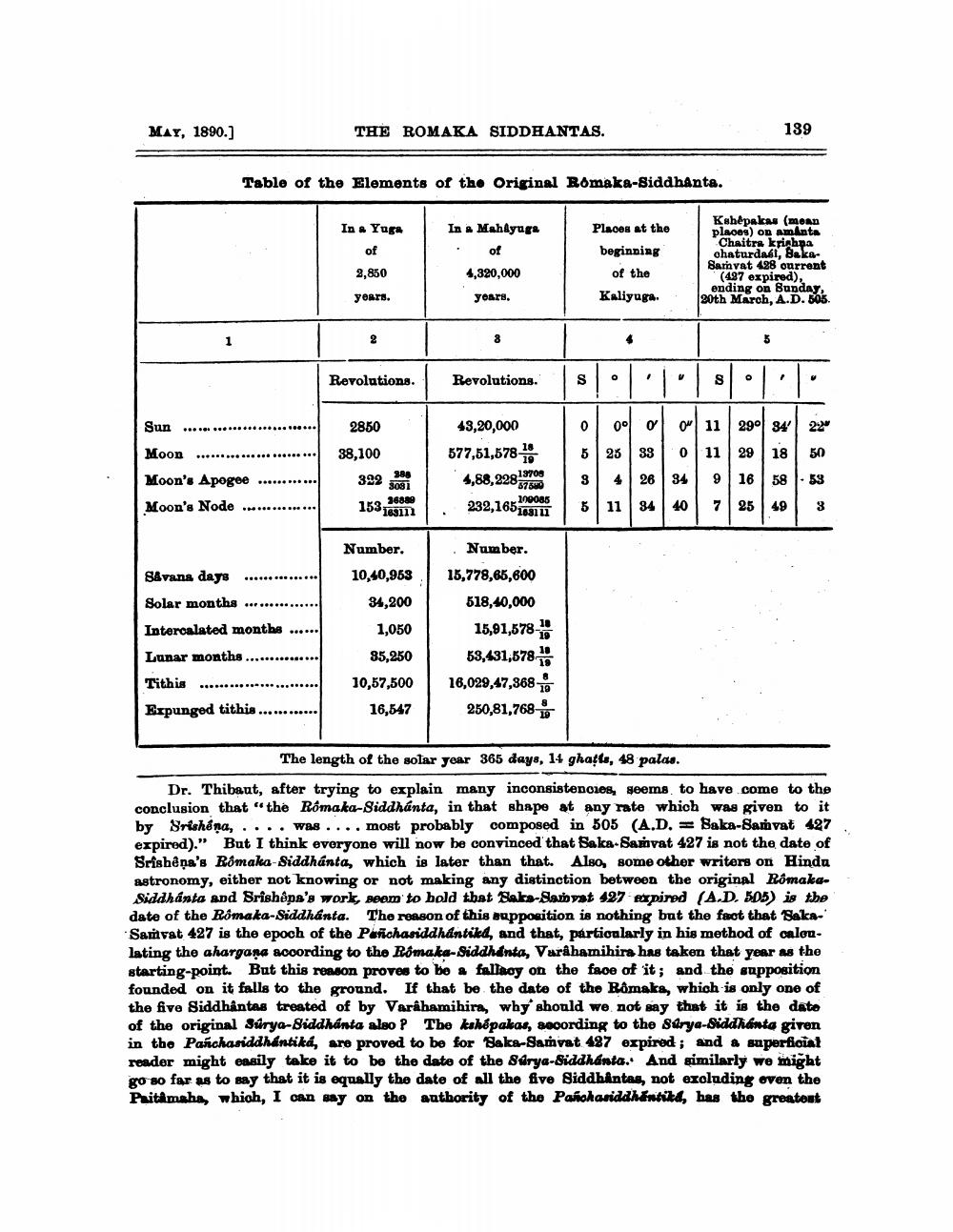________________
MAY, 1890.]
1
Sun........
Moon
Moon's Apogee
Moon's Node
Savana days Solar months
Table of the Elements of the Original Rómaka-Siddhanta.
*********...
Intercalated months...
Lunar months.
Tithis Expunged tithis
THE ROMAKA SIDDHANTAS.
**********...
In a Yuga of
2,850
years.
Revolutions.
2850
38,100
322
153
288
3081
36889 163111
Number.
10,40,953
34,200
1,050
35,250
10,57,500
16,547
In a Mahiyuga of 4,320,000
years.
Revolutions.
43,20,000
577,51,578-1
4,88,22813708 232,165163111
57580 109085
Number.
15,778,65,600
518,40,000
18
15,91,578- 19
18
53,431,578 19
16,029,47,368 19 250,81,768-10
S
Places at the beginning
of the Kaliyuga.
0 0° Ο
5 25 33
8
4
881
26 34
5 11 34 40
Kahepakas (mean places) on amanta Chaitra krishna chaturdasi, BakaSamvat 428 ourrent
(427 expired), ending on Sunday, 20th March, A.D. 505.
S
139
0
O" 11 29° 34' 22
50
0 11 29 18 9 16 58 7 25 49
53 3
T
The length of the solar year 365 days, 14 ghatts, 48 palas.
Dr. Thibaut, after trying to explain many inconsistencies, seems to have come to the conclusion that "the Rómaka-Siddhánta, in that shape at any rate which was given to it by Srishéna,.. was.... most probably composed in 505 (A.D. Saka-Samvat 427 expired)." But I think everyone will now be convinced that Saka-Samvat 427 is not the date of Srishêna's Bômaka-Siddhanta, which is later than that. Also, some other writers on Hindu astronomy, either not knowing or not making any distinction between the original RómakaSiddhanta and Srishêpa's work, seem to hold that Saks-Saivat 427 expired (A.D. 505) is the date of the Romaka-Siddhanta. The reason of this supposition is nothing but the fact that 'SakaSamvat 427 is the epoch of the Pañchasiddhantika, and that, particularly in his method of calonlating the ahargana according to the Romaka-Siddhanta, Varâhamihira has taken that year as the starting-point. But this reason proves to be a fallacy on the face of it; and the supposition founded on it falls to the ground. If that be the date of the Bômaka, which is only one of the five Siddhantas treated of by Varâhamihira, why should we not say that it is the date of the original Surya-Siddhanta also ? The kshépakas, secording to the Surya-Siddhanta given in the Panchasiddhántiká, are proved to be for Baka-Samvat 427 expired; and a superficial reader might easily take it to be the date of the Surya-Siddhanta. And similarly we might go so far as to say that it is equally the date of all the five Siddhantas, not excluding even the Paitamaha, which, I can say on the authority of the Pañchasiddhantika, has the greatest




